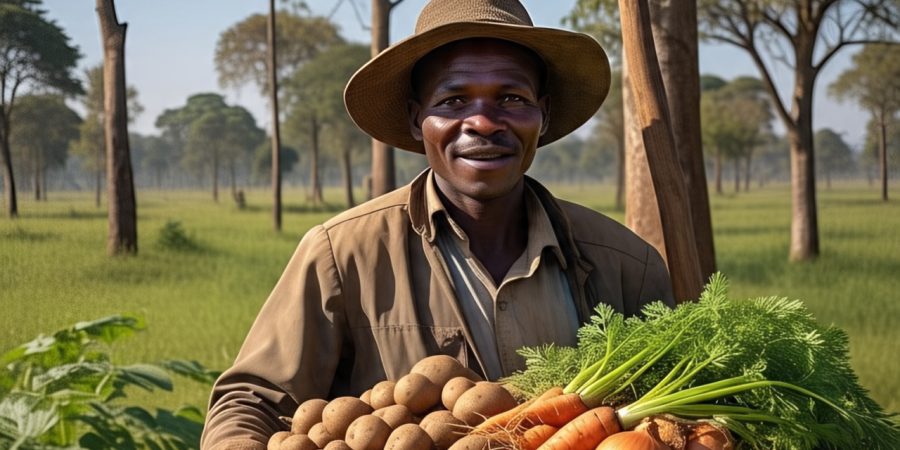Zambia’s cold season, running from May to August, is the perfect time to grow certain crops that actually prefer cooler temperatures. While some plants go dormant or struggle in the chill, others thrive, offering farmers a smart opportunity to keep producing food and income.These five crop categories are cold-season champions.
Whether you’re farming commercially or growing on a small plot, these crops are reliable, marketable, and relatively easy to manage with the right practices.
1. Brassicas
Examples: Cabbage, Broccoli, Cauliflower, Kale
Brassicas are among the most dependable crops during Zambia’s cold months. They thrive in cool temperatures between 10°C and 20°C, which help them develop compact, market-friendly heads and reduce the risk of pests.
Growing tips for brassicas:
Soil: Well-drained loamy soil with high organic matter; pH 6.0–6.8
Planting: Start in nursery beds and transplant after 4–6 weeks
Spacing: 45 cm between plants, 60 cm between rows
Fertilizer: Apply compost or manure before planting; follow with nitrogen-rich top dressing (e.g., urea or CAN)
Best Regions: Lusaka, Central, Copperbelt, Northern, and Muchinga Provinces
Note: Protect young plants from aphids and caterpillars with neem spray or recommended pesticides.
Read articles about growing cabbage here
2. Leafy Greens
Examples: Spinach, Lettuce, Swiss Chard, Mustard Greens
Leafy greens grow quickly and can be harvested multiple times in a season. They’re perfect for smallholder farmers and backyard gardens and have strong market demand—especially in urban areas.
Growing tips for leafy greens:
Soil: Fertile, well-drained soil enriched with compost
Planting: Sow directly or use a nursery; transplant at 20–30 cm spacing
Watering: Keep soil consistently moist but not waterlogged
Fertilizer: Use organic compost and boost with nitrogen-based feeds
Best Regions: All provinces; ideal for peri-urban and backyard plots with access to water
Note: Harvest outer leaves regularly to encourage continued growth.
Click here for articles on growing spinach
3. Legumes (Peas)
Examples: Garden Peas, Sugar Snap Peas
Peas are a game-changer for cold-season farming in Zambia. They grow best in cooler weather and naturally enrich the soil by fixing nitrogen, which benefits future crops.
Growing tips for legumes:
Soil: Well-drained soil with moderate fertility; pH 6.0–7.5
Planting: Direct sowing in rows; support with sticks or trellises
Spacing: 30–45 cm between rows
Fertilizer: Minimal nitrogen needed; use compost and phosphorus-rich fertilizers (e.g., DAP) at planting
Best Regions: Southern, Eastern, and Central Provinces, especially cooler highland areas
Note: Harvest regularly to extend the flowering period and boost yield.
4. Root Crops (Carrots)
Examples: Carrots, Beets, Turnips
Root crops like carrots thrive in cool weather, which helps them develop sweet, firm roots. They are ideal for sandy or loamy soils that allow easy root penetration.
Growing tips for root crops:
Soil: Loose, sandy loam with good drainage; avoid fresh manure
Planting: Sow seeds directly and thin out after germination
Spacing: 5–10 cm between plants in rows 30 cm apart
Fertilizer: Apply phosphorus-rich base fertilizer; avoid excess nitrogen
Best Regions: Eastern, Central, and parts of Western Province with light soils
Note: Consistent watering helps prevent cracking and promotes uniform roots.
5. Bulbs (Garlic)
Examples: Garlic, Onions
Garlic is a slow but rewarding cold-season crop. It has a long growing cycle but delivers high returns due to its growing demand in both household and commercial markets.
Growing tips for bulbs:
Soil: Loose, well-drained soil rich in organic matter
Planting: Plant individual cloves (pointed side up) 5–7 cm deep
Spacing: 10–15 cm between cloves in rows 25–30 cm apart
Fertilizer: Use compost or manure before planting; apply potassium-rich top dressing mid-season
Best Regions: Lusaka, Eastern, Central, and Copperbelt Provinces
Note: Keep beds weed-free and ensure even watering, especially during bulb formation.
Click here for articles on growing garlic
Final Thoughts
Cold season doesn’t mean downtime for Zambian farmers. It’s a window of opportunity. With the right crop selection and basic care, you can maintain steady production, diversify your income, and even boost your soil health for the next season.
Choose your crop category based on your region, soil type, and available resources. Whether you’re planting in a backyard garden or preparing a hectare of land, these five cold-season crops are proven performers.
